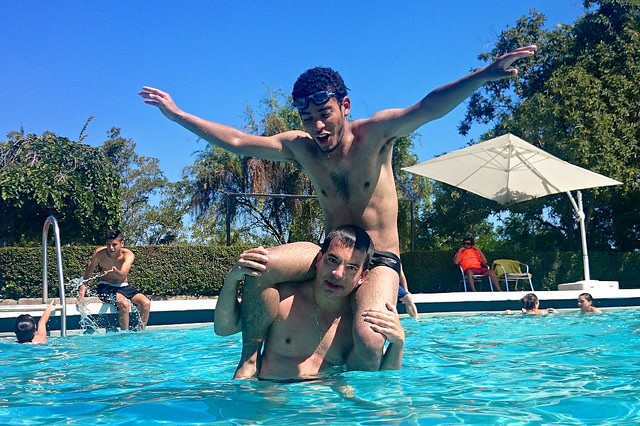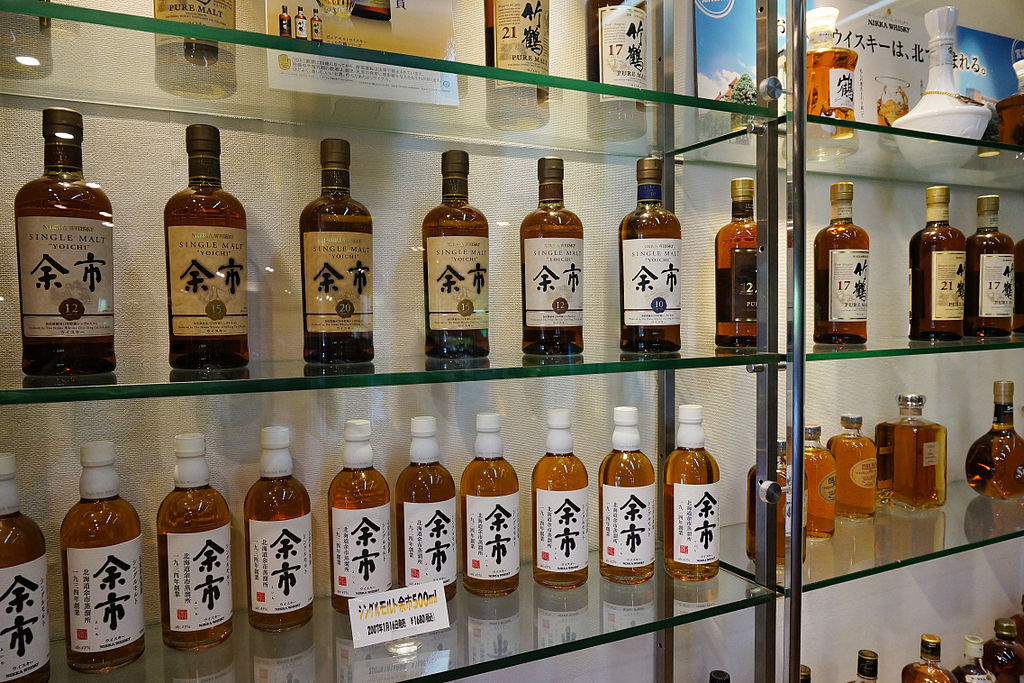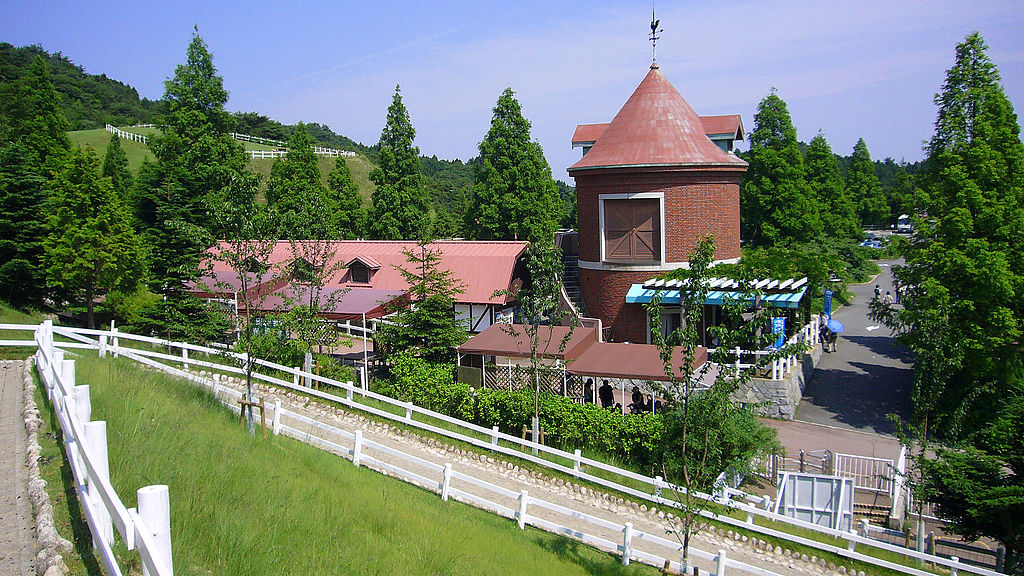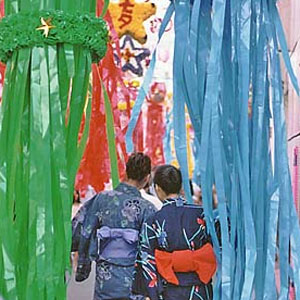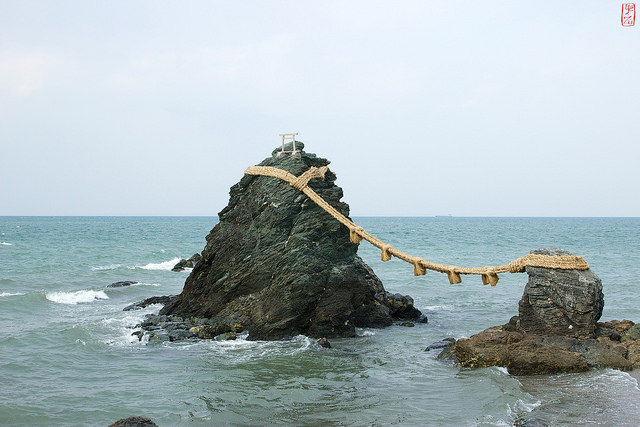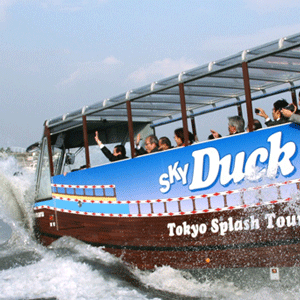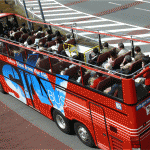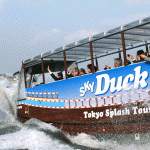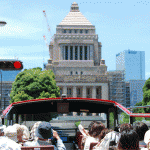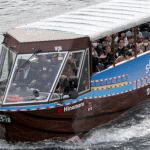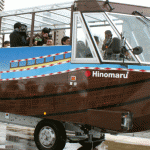Jun 30, 2016
Outdoor Swimming Pools in Nagoya
 This summer, as the heat starts to rise and perhaps the kids start complaining of nothing to do in the holidays, what could be better than heading out and getting into the pool?
This summer, as the heat starts to rise and perhaps the kids start complaining of nothing to do in the holidays, what could be better than heading out and getting into the pool?
All around Nagoya, between July 20th and August 31st, there are outdoor public swimming pools, meaning you can get out of the air-con, feel the sunshine on your skin, all the while keeping nice and cool. And what’s more, at just 300 JPY for adults and 100 JPY for those under 16 & over 65, it needn’t cost an arm and a leg.
What you should know about visiting outdoor public pools in Japan
Hygiene is taken seriously
In some countries it is acceptable to quickly stick your head under the shower before diving into the pool – in some countries even this nod to hygiene is not required – but in Japanese public baths, much like in the hot spa onsen, it is expected that you wash thoroughly before you enter the pool. Soap and shampoo are not necessarily required, but a good scrub under the shower head is the least that is expected. Another thing to remember is the removal of your shoes before entering the changing rooms which, considering how many bare feet there are, is not such a daft idea.
Swimming caps are required
Whether male or female, anyone swimming at a public pool is required to wear a swimming cap. And while some of the more follicly challenged amongst us gentlemen may feel it an absurd undertaking when we have more hair on our chests than on our heads, pool culture in Japan demands that we must follow the lead of our more hirsute companions. Swimming caps (often cloth as opposed to the nylon sort worn by professional swimmers) can be found in most sports stores. If you do not have a cap your local pool may be able to provide you with one for your visit.
The pool is not necessarily a play area
It wasn’t so long ago that the pools were predominantly places in which to swim and little else. There were no games, no splashing about, no nothing. Nowadays this has mostly been relaxed, and all sorts of floating devices are permitted. However this may not be the case at all pools so either check with staff, lifeguards, or try to follow the examples of the other patrons. Also, the pools are not sunbathing spots, so don’t expect to be permitted to pull up a lounger and lie about soaking up the rays. You’re there to enjoy the water, and that’s just what you should be doing.
Get out of the pool
One of the great things about swimming is the peace and solitude of being fully submerged under water. In fact it can often feel as if you are all alone in the pool. If you do not pay close attention in Japanese public pools, this may indeed be the case. Every hour (usually on the hour or at five minutes to), the pool is entirely cleared while staff perform safety inspections and the lifeguards are changed.
Cap, bathing suit, and nothing else
Most swimming pools will request that women do not wear make up in the pool, but jewelry too is likely forbidden. Another big no-no in the pool are tattoos, though if you are aware of Japanese culture this will come as no surprise. If you do have tattoos, it is probably best to cover up with a rash vest, waterproof bandage, or the most concealing bathing suit you can find.
Outdoor pools in Nagoya
All pools below are open from 10:00 to 17:30.
Atsuta-ku
- Atsuta Pool
- 2-5-2 Rokuno, Atsuta-ku
- Tel: 052-882-8091
- Closed: Mondays
Kita-ku
- Kusunoki Pool
- 126 Wakazuru-cho, Kitaku
- Tel: 052-901-9949
- Closed: Fridays
Meijo Pool
- 1-2-13 Meijo, Kita-ku
- Tel: 052-912-0499
- Closed: Wednesdays
Meito-ku
- Meito Pool
- Kamiyashiro Aza Ashibasama, Itaka-cho, Meito-ku
- Tel: 052-701-4986
- Closed: Wednesdays
Minato-ku
- Minato Pool
- 1-1401 Tochi, Minato-ku
- Tel: 052-384-5587
- Closed: Fridays
Mizuho-ku
- Mizuho Koen Pool
- 5-1 Yamashita Dori, Mizhuho-ku
- Tel: 052-836-8200
- Closed: Mondays
Moriyama-ku
- Moriyama Pool
- 197 Muraai-cho, Moriyama-ku
- Tel: 052-794-1319
- Closed: Wednesdays
Nakamura-ku
- Inabaji Pool
- 1-47 Inabaji-cho, Nakamura-ku
- Tel: 052-413-0779
- Closed: Thursdays
Nakagawa-ku
- Tomida Pool
- 809 Higashi Kanosato-cho, Nakagawa-ku
- Tel: 052-301-0390
- Closed: Fridays
Nakagawa Pool
- 3-1 Kitae-cho, Nakagawa-ku
- Tel: 052-362-9131
- Closed: Wednesdays
Nishi-ku
- Yamada Pool
- 236-1 Gosaibi-cho, Nishi-ku
- Tel: 052-503-9977
- Closed: Fridays
To find your nearest pool, check out this map created by Nagoya International Center.
Nagashima Spa Land
While not a public pool, and not even in Nagoya (it is over in Kuwana in Mie Prefecture) the outdoor waterpark at Nagashima Spa Land is filled to the brim with rides. In fact it is so jam-packed that it is credited as being the densest – with more rides per meter – in the world. There are eight slides including tunnels, rafts, and the frankly terrifying banana slingshot ride that has to be seen to believed. As well as the rides there are three main pools including a wave pool and a hot onsen pool. Be warned though, on summer weekends it can get pretty packed with people, and it is imperative that you cover up any tattoos.
Photo: flickr.com -Time for fun by alobos Life - (CC BY-SA 2.0) -Modified
Jun 29, 2016
El Zocalo Burrito in Osaka
 I have it on good authority that El Zocalo Burrito in Osaka is all the burrito you will ever need. More US than Mexican, El Zocalo Burrito features great big burritos with an assortment of toppings that anyone who has ever dined at a taco truck in LA would immediately recognize.
I have it on good authority that El Zocalo Burrito in Osaka is all the burrito you will ever need. More US than Mexican, El Zocalo Burrito features great big burritos with an assortment of toppings that anyone who has ever dined at a taco truck in LA would immediately recognize.
They serve Mission-style burritos, as distinguished from other more traditional burritos by their signature large size and the inclusion of extra rice, beans, and other ingredients. Another feature of mission style, the aluminum wraps you get them in. This shop serves up tasty, fresh, affordable, and fast US style Mexican burritos with style and creativity. If you are in the neighborhood you cant go wrong at this little hole in the wall shop.
El Zocalo Burrito
Wings Giza Building 1F-B, 1-9-6 Kitahorie, Nishi-ku, Osaka 550-0014 (map)
06-6533-0337
Photo: Wikipedia “San Francisco burrito-sparkletack-2005” by Joewright (CC BY 1.0) (modified)
Jun 25, 2016
The Japanese Whisky Paradox: Little Known and Widely Admired

If you have lived most of your life outside Japan you might not be familiar with Japanese whisky. Although the fermented grain mash alcohol has been distilled on the islands since the late 1800s, Japan’s take on the storied spirit was not actively exported around the world (without the “e”) until this century.
Since then Japanese whisky has not only made its mark with malt-loving connoisseurs but burnished its reputation in international taste competitions as well. But the general public has not yet caught up with the experts.
Why is Kyoto the birthplace of Japanese whisky?
After Japan opened to foreign trade in 1853, the Japanese people began to enjoy their first taste of Western liquors. One importer, Shinjiro Torii, set out to replicate Scotch whiskey and constructed the island’s first malt whisky distillery in a suburb of Kyoto that was renowned for the purity of its water – Yamazaki. The key ingredient for distillation percolates from deep inside the earth in natural springs.
Japanese whisky made its first leap forward in the 1920s when Masataka Taketsuru joined Torii’s operation, Kotobukiya . The main qualification on his resume was that he had mastered the techniques for distilling in Scotland while studying organic chemistry at the University of Glasgow. Taketsuru set out to replicate the manufacture of whisky the way he learned as an apprentice at the Longmorn Distillery Company.
Kotobukiya eventually became known as Suntory and Taketsuru moved to the island of Hokkaido in the north of Japan, which he thought most resembled the terrain of Scotland. There he started his own distillery and began marketing whisky under the Nikka brand in 1940.
How good is Japanese whisky?
Japanese whisky was distilled for the native palate and for many decades was unheard of beyond the country’s borders. Over the years the number of producers expanded to nine, each blending whisky in their own distillation style in the Scottish tradition. With the coming of the Internet, the word of these diverse blends spread and Japanese brands became more integrated into the whisky world.
In blind taste testings Japanese whiskies immediately began racking up awards. In 2001, a Nikka 10-year Yoichi single malt walked away with Best of the Best honours in Whisky Magazine’s influential rankings. The secret of Japanese whisky had been revealed.
Where to start with Japanese whisky
For those new to Japanese whisky, one of the best introductions to the spirit is Suntory’s Hibiki label. The Hibiki 30-year has won a charred oak barrel’s worth of awards, including several “World’s Best Blended Whisky” ribbons. In the popular movie Lost in Translation, it is the brand of choice for a sullen Bill Murray.
A little ways down the price scale is the Yamazaki 18-year for single malt devotees. The standardbearer from Nikka is named after the founder, the Taketsuru 17-year pure malt.
And if you want to experience Japanese whisky at its source, Suntory Yamazaki Distillery offers tours and tastings. You can immerse yourself in the story of whisky in Japan, examine a wall with several thousand bottles of whisky varieties and even attend whisky seminars.
By 663highland (Own work) [GFDL, CC-BY-SA-3.0 or CC BY 2.5], via Wikimedia Commons
Jun 23, 2016
Embarkation and Disembarkation Card Changes at Airports in Japan
From April 1, 2016, changes were made to the format of the Disembarkation Card for Foreign Nationals, Embarkation and Disembarkation Card for Re-entrants, and the Embarkation Card for Foreign Nationals was discontinued.
The new format will no longer have some boxes such as “nationality/region”, “sex” and “passport number”, and in order to prevent the omission of necessary information, the sections for “answers to required questions” and “signature”, which used to be on the back, has been moved to the front of the Disembarkation Card for Foreign Nationals.

Another big change, you will no longer be required to select either “Re-entry Permission” or “Special Re-entry Permission” in the Embarkation Card for Re-entrants. Insted you will have to fill in whether or not you intend to re-enter Japan.

For further details, please refer to the Immigration Bureau website
www.immi-moj.go.jp
Or, see the full PDF summary of the changes directly on the same site:
www.immi-moj.go.jp/re-ed/EDcard_leaf_en.pdf
Jun 22, 2016
Pay a Visit to Rokkosan Farm

If you love experiencing the natural beauty of Japan, Kobe certainly has all the bases covered. And in addition to the natural scenery within and surrounding this port city, Kobe also offers some unique opportunities to get up close and personal with the animals and wildlife. One such place is called Rokkosan Pasture, and a visit there this summer is sure to delight.
Tucked away in the shadow of Mt. Rokko, just a 30-minute drive from Kobe, is this small but lively farm. Just a ¥500 entrance fee will grant you access to the pasture and all it has to offer. With so many animals roaming around, you could spend an afternoon simply wandering the farm and enjoying the friendly sheep or cow sightings. Or you could choose a more hands on approach to farm life by checking out one of the many options to pet and feed the animals. Goats, rabbits, cows, and sheep all have their own petting and feeding corrals for you to explore! There are also plenty of horses that aren’t only there to be pet— you can ride them too!
If you’d prefer to watch the animal action from a distance, Rokkosan Pasture also offers live animal entertainment like horse shows and sheepdog herding shows throughout the day.
Of course spending time outside at the farm is wonderful but there are also some interesting indoor activities you shouldn’t miss! Cooking classes where you can learn to make stone oven pizza, cheese, butter, soft caramel, sausages, ice cream and more are fun and tasty options to pass the time at the pasture. Class options don’t just stop at food however, you can also join workshops to craft wool sheep figurines or pottery classes.
Even if animals, baking, or crafting doesn’t suit your fancy, simply dining at one of the various restaurants around the farm will be enough to make you want to come back for more! With so many different options to get involved on the farm, Rokkosan Pasture is truly a Kobe gem that is worth a visit this summer.
Kobe Shiritsu Rokkosan Farm
Where: 1-1 Rokkosancho, Nada-ku, Kobe 667-0101, Hyogo Prefecture
Access: 30 minutes from Kobe by private car or from Hankyu Rokko Station take the city bus to Rokko Cable-shita and transfer to the Sky Shuttle Bus and get off at the Rokkosan Bokujo stop
Open: 9:00 a.m. – 5:00 p.m. (March 20 – November 5)
Admission: Adults: ¥500, Elementary & Middle School Students: ¥200
Tel: 078-891-0280
Website (English and Japanese): http://www.rokkosan.net
By 663highland (663highland) [GFDL, CC-BY-SA-3.0 or CC BY 2.5], via Wikimedia Commons
Jun 22, 2016
Tanabata Star Festivals Around Nagoya
The Tanabata Festival is celebrated annually on either July 7 or August 7, depending on where you are in Japan. The festival celebrates the legend of two lovers, represented by the Altair (Cowherd Star) and Vega (Weaver Star), tragically separated by the Milky Way and allowed to meet only once a year.
More about the legend of Tanabata
This matsuri marks the beginning of summer in many places across Japan, and you can find distinctive tanazaku displays, often described as “Japanese Christmas Trees” and Fukinagashi Streamers decorations throughout Japan for either July or August (depending on the region).
Tanzaku “Wish Trees”
 People celebrate tanabata by writing wishes on small pieces of paper called “tanzaku,” and tying them to a decorated bamboo tree. They then pray for their wish to come true. The bamboo and decorations are destroyed after the festival, usually by being set afloat on a river or in an bonfire.
People celebrate tanabata by writing wishes on small pieces of paper called “tanzaku,” and tying them to a decorated bamboo tree. They then pray for their wish to come true. The bamboo and decorations are destroyed after the festival, usually by being set afloat on a river or in an bonfire.
Tanabata is celebrated in many Asian countries and has roots deep in Chinese history. In Japan the celebrations are localized with different regions having developed their own styles and traditions over time, but Sendai’s style is the most famous of the varieties.
Fukinagashi Streamers
 Another distinctive Tanabata decoration are ‘fukinagashi.’ These colorful streamers are hung along streets, or in shopping arcades to represent the strings Orihime, one of the lovers, uses in her weaving.
Another distinctive Tanabata decoration are ‘fukinagashi.’ These colorful streamers are hung along streets, or in shopping arcades to represent the strings Orihime, one of the lovers, uses in her weaving.
.
Tanabata Festivals Near Nagoya
Ozone Tanabata Festival
The festival is held at the OZ Mall and Ozone shopping arcade near Ozone Station on the Meijo subway line. The festival features a selection of arts and crafts and a flea market, obon dancing, taiko performances, and street performers.
- July 29/ 30/ 31, 2016
- Get off Ozone Station on the Meijo subway line and use exit 3
- www.ozone-ave.com/event (JP)
Endoji Tanabata Festival
The festival is held at the Endoji Shopping Arcade in Nagoya’s Nishi-ku area. This is probably the smallest Tanabatta on the list, but it is in a cool location that not many take the time to see. Endoji is an old Japanese style shopping arcade near the Nagoya International Center. This festival will feature your standard variety of food and game stalls, as well as the decoration of this cool old area.
- July 27/ 28/ 29/ 30/ 31 2016 11:00-21:00
- Get off at Kokusai Center Station on the Sakuradori line and take exit 2. From there the festival is a 5 minute walk to the north.
- www.nagoya-info.jp/event/center/58.html (JP)
Ichinomiya Tanabata Festival
 The largest Tanabata festival in the Nagoya area is the annual Ichinomiya Tanabata Festival. There are lots of decorations, stalls, parades, stage shows to enjoy, and tons of people enjoying the summer festival and “bon dancing” wearing their yukata. The festival is held over 4 days culminating in the main festival; traditionally held on the last Sunday of July at Masumida Shrine, which enshrines a goddess of fabrics, and the Honmachi Shopping Arcade, which can be found very near to Ichinomiya Station on either the JR or Meitetsu lines
The largest Tanabata festival in the Nagoya area is the annual Ichinomiya Tanabata Festival. There are lots of decorations, stalls, parades, stage shows to enjoy, and tons of people enjoying the summer festival and “bon dancing” wearing their yukata. The festival is held over 4 days culminating in the main festival; traditionally held on the last Sunday of July at Masumida Shrine, which enshrines a goddess of fabrics, and the Honmachi Shopping Arcade, which can be found very near to Ichinomiya Station on either the JR or Meitetsu lines
The Ichinomiya Tanabata Festival is considered the third best of the great Tanabata Festivals in Japan, with the Sendai and Hiratsuka Tanabata Festivals topping that list.
- July 28/ 29/ 30/ 31 2016 11:00-21:00
- Get off at Owari-Ichinomiya Station on the JR Tokaido-honsen line (map)
- www.138ss.com/tanabata_bunner/index_tanabata.html (JP)
- More photos of the Ichinomiya Tanabata Festival
Photo: Wikipedia “Tanabata Tokyo” (Public Domain) Modified Photo: Wikipedia “Tanabata” by MASA (CC BY-SA 3.0) Modified Photo: Wikipedia “Sendai Tanabata Festival 2010” by Nikm (Public Domain) Modified
Jun 21, 2016
Dealing with Mosquitoes at Home in Japan

It is summer. It is hot. It is wet and humid. And you are probably sharing your Japanese evenings with large, striped Tiger mosquitoes. The insects hatch and begin hunting for mammalian blood in April and continue until the first cold weather in fall.
Most of the time the bites cause nothing more than a short-term itch but these bloodsuckers can spread a disease known as Japanese encephalitis that can cause fever, headaches and vomiting for up to two weeks and in rare cases is fatal.
There are as many approaches to dealing with mosquitoes as there are sufferers. Some prefer repellents; others are not satisfied until the mosquitoes are eradicated. Some restrict their solutions to natural weapons and others will turn to anything that works.
The Japanese have actively battled their tormenters for decades. In 1895 an exporter of mandarin oranges named Ueyama Eiichiro was introduced to a crushed powder from chrysanthemum flower pedals that acted like kryptonite to biting insects. Ueyama blended the powder, whose active ingredient was called pyrethrin, with a starch base that burned as an incense stick and repelled insects. To prolong the effects of the incense he developed mosquito coils that took the name katori senkō. The green mosquito-slaying coils were a Japanese summer staple for decades.
In recent years more technologically advanced mosquito-fighters have joined the battle. These include:
Electric Mosquito Repellent Machines
The coils emit strong odors that many find unpleasant. Electric mosquito repellents, NoMat is a popular model, do the same job and are noiseless like coils and odorless. The liquid-filled gizmos heat up and dispense a vapor insects find repugnant. The devices, that can also be battery-powered for portability, can be refilled to easily last the entire mosquito season and can be placed in rooms throughout the house.
Portable Vapor Dispensers
Vapor dispensers are mobile and can be carried to the backyard or outdoors. They are effective in doorways and other entry points into your house.
Mosquito Exterminating Mats
The mat is was a precursor to the vapor dispensers and can still be found in Japanese homes. It works on the same principle of heat-released pesticide into a room.
Hanging Insect Repellents
These low-tech solutions contain strips impregnated with pyrethrin and derivatives that are simply hung at windows and doorways where mosquitoes are prowling. More potent hangers are designed for outdoors use. When buying hanging insect vapes, the number of effective days are prominently displayed on the package.
Insect Repellent Rings
Should biting mosquitoes penetrate your house’s defenses you can always turn to wearables like rubber bracelets that slip around the wrist. Make sure the rings are treated with naturally occurring repellents as these will be touching the skin.
Creams and Lotions
Similar to wearable repellents, natural products containing eucalyptus oils or lavender oils that ward of insects can be applied directly to the body. These can also be applied by sprays and wipes.
Mosquito Killers
A wide range of products are on Japanese shelves that will kill the winged intruders. These include insecticidal sprays, electronic zappers and even hand-held weapons that can impart a fatal electric shock when swatting mosquitoes.
trini [CC BY 2.1 jp], via Wikimedia Commons
Jun 21, 2016
Enjoy a Night Cruise Along Hiroshima Bay this Summer

What better way to see the beauty of the Hiroshima Bay and surrounding islands than from the deck of a boat or cruise ship? Though you can rent different water vehicles throughout the day for your own personal use, like kayaks or paddle boats, there’s something positively relaxing and wonderful about a cruise experience on a summer evening. In addition to the beauty of an evening time cruise, the summer opens up opportunities for dining, shrine illuminations, and other entertainment on the water; an extra treat for friends, family, couples, and co-workers alike!
From July-August various Hiroshima Bay cruises offer evening or sunset rides to fit all budgets, schedules, and social groups. From private ships to rent among 10 friends to large ones to share among all guests, there is certainly a summer cruise option to suit your fancy.
Ginga (Galaxy) Dinner Cruise
For a luxurious dining experience, treat yourself to a gorgeous sunset dinner cruise or standard dinner cruise to Miyajima and the Itsukushima shrine on the Galaxy. Though a bit pricey, this option for evening cruising also includes a tasty meal so you can enjoy the sights of the sea while dining on fine cuisine.
Sunset Dinner Cruise
When: Sundays only
Timetable:
Boards: 5:15 p.m.
Departs: 5:30 p.m.
Arrives: 7:40 p.m.
Dinner Cruise
When: Monday—Saturday evenings
Timetable:
Boards: 6:35 p.m.
Departs: 6:50 p.m.
Arrives: 9:00 p.m.
Dining Options and Prices for Both Cruises: *prices include all tax and service charges*
Galaxy Dinner Course: ¥9,000
Chef’s Specialty Full Course: ¥15,000
For reservations/inquiries call: 082-255-3344
Miyajima Light Up Cruise with Aqua Net
Book a cruise onboard the Daisan Mikasamaru through Aqua Net and you won’t be disappointed. This ship runs six different 30-minute cruises nightly where the glowing Miyajima O-tori gate and Itsukushima Shrine can be viewed against the dark sky and sea.
Departs from: Miyajima Third Pier- the end pier of ferry terminal
Price: Adults: ¥1,600, Children (4-12 years): ¥800
Booking: You must reserve your seat at least 2 hours before departure and reservations can be made completely online here or by fax.
Time table: View the timetable of evening rides on their website here. You can even check dates and availability to plan your trip ahead of time!
Email: sanpaiyuran@aqua-net-h.co.jp
Private Yacht or Cruise Liner from Luxury Yacht Japan
There are many options for hiring private boats along the Bay and this is a reputable option! Commercial liners tend to focus on daytime cruises, so if you’re interested in an evening ride along the Bay without the hassle of crowds or time schedules, you might want to check out an option like Luxury Yacht Japan. Various styles of ship, sizes, and time options are available, and inquiries or reservations can be made in English on their website.
There are also many private cruising options as well as daytime opportunities for touring the Bay. Be sure to check out this map and infographic for more details!
By Jordy Meow (Own work) [CC BY-SA 3.0], via Wikimedia Commons
Jun 20, 2016
Day Trips From Nagoya – Ise Shima
Following the visiting of the G7 national heads of states, Ise Shima has been in the news frequently as of late. But there is so much more to the beautiful Mie Prefecture spot than politics.
About Ise Shima
The Ise-Shima region refers to the areas of eastern Mie Prefecture in or around Ise-Shima National Park, including the cities of Ise, Toba, Shima. The area is an extremely popular tourist destination for both foreigners and Japanese, with many resort hotels and beaches in the area. It is also famed for fresh seafood, particular oysters and lobsters, or as they are called in Japan ‘Ise Ebi’ (Ise prawns).
Ise
 Without doubt the most popular place to visit in the area is Ise-shi (Ise City), being as it is the home to one of the most sacred spots in Japan, the Ise Grand Shrine. With in excess of 7.5 million people from Japan and around the world making the pilgrimage to the holy spot each year (including the visiting dignitaries of the G7 Summit), it sprawls across the city and is a must see destination for anyone visiting the area.
Without doubt the most popular place to visit in the area is Ise-shi (Ise City), being as it is the home to one of the most sacred spots in Japan, the Ise Grand Shrine. With in excess of 7.5 million people from Japan and around the world making the pilgrimage to the holy spot each year (including the visiting dignitaries of the G7 Summit), it sprawls across the city and is a must see destination for anyone visiting the area.
The Grand Shrine (more about which you can read here) is not the only sacred spot in the area. Nearby, as part of a rocky outcrop into the sea, is Meoto Iwa, the wedded rocks (pictured). The two great stones, tied together by a ‘shimenawa’ straw rope weighing over a ton, represent the Shinto deities Izanami-no-Mikoto and Izanagi, and are perhaps the visual representation of the area.
But Ise isn’t just about religious pilgrimage. Ise Azuchi Momoyama Bunkamura is a pre-Edo period theme park, modeled on a full size representation of Odo Nobunaga’s Azuchi Castle. It’s great for history buffs, and kids can enjoy the samurai displays and acting like ninjas, including dressing up and (if old enough) trying out shiruken ninja throwing stars.
For another hands on, child friendly experience you can go to the small but intimate Ise Sea Paradise aquarium. Though not the biggest of its kind, it is quite interactive with dolphin shows and meeting kiss-blowing walruses.
Toba
 The city of Toba is famed primarily for three things: the semi naked female divers called Ama-san, the pearls for which they dived, and the fabulous food.
The city of Toba is famed primarily for three things: the semi naked female divers called Ama-san, the pearls for which they dived, and the fabulous food.
Thanks to changes in technology and culture the 2,000 year old Japanese traditional ‘ama’ divers are a dying breed, however while they are mostly in their later years they still exist. These women, now fully clothed (historically, and as recently as the 1960s, ama dived wearing only a loincloth) free-dive for pearls without scuba gear or air tanks. Should you wish you can meet and dine with them on the freshest sea food, including lobster sashimi (pictured), as they regale you with their tales of the sea. Check the link here or details. (Bringing a translator is probably necessary.)
If jewelry is your thing, well it is advisable to check our one of the many pearl based jewelry stores. Toba is the location of the world’s first purpose built pearl culturing farms. To learn about the history of the industry in the area then Mikimoto Pearl Island is a nice museum dedicated to the precious jewel.
Being a coastal area, like Ise-shi, Toba-shi also has an aquarium, but at 1.5km, housing 25,000 specimens of some 1,000 species the Toba Aquarium is much larger. The area is separated into 12 zones including one displaying the sea life of the Ise Shima region.
Shima
 Shima-shi is the least visited of the three, but it is no less worthy of your time. Perhaps its greatest attraction is its great natural beauty, which is best seen from the Binadama road. Taking a stroll along this scenic coastal path is beautiful by day but particularly romantic by night as rows of ‘binadama’, spherical glass fishing buoys, are lit along the pathway (pictured).
Shima-shi is the least visited of the three, but it is no less worthy of your time. Perhaps its greatest attraction is its great natural beauty, which is best seen from the Binadama road. Taking a stroll along this scenic coastal path is beautiful by day but particularly romantic by night as rows of ‘binadama’, spherical glass fishing buoys, are lit along the pathway (pictured).
For a great view of the region’s staggering scenery, head out to the Anorisaki Lighthouse. First lit in 1873, the lighthouse is a staple of the area’s landscape. Though modernized in 1948, it is open to tours, and is a great location from which to gaze out across the sea.
The Shima Spainland is something more for the kids. A theme park dedicated to the Iberian nation, there are rides and food to enjoy amongst the Spanish ambiance, though quite what it has to do with the local area is beyond me.
By Mark Guthrie
Photo: Flickr.com Les rochers mariés by Vincent Briccoli (CC BY-SA 2.0) -Modified
Photo: Flickr.com DSC06757.JPG by takaokun (CC BY-SA 2.0) -Modified
Photo: www.iseshima-kanko.jp/en/see-and-do/1258 -Modified
Jun 10, 2016
Ride the Tokyo Sky Duck Amphibious Tour Bus!
 Back in Seattle we had “The Duck,” an amphibious bus that took tourists on a sort of “surf and turf” tour of the city. Hinomaru Limousine Group in Tokyo also be takes to the water with “The Sky Duck.” The Sky Duck is the newest edition to the fleet of “Sky Buses” already plying the metropolis’s busy streets.
Back in Seattle we had “The Duck,” an amphibious bus that took tourists on a sort of “surf and turf” tour of the city. Hinomaru Limousine Group in Tokyo also be takes to the water with “The Sky Duck.” The Sky Duck is the newest edition to the fleet of “Sky Buses” already plying the metropolis’s busy streets.
The original Sky Bus is a must for any traveler to, or newly minted resident of, Tokyo. They are easy to get to, fun to ride, and reasonably priced. Being a bus the “mobile” aspect of covering a ton of ground in Tokyo in a limited time frame is pretty obvious. The buses are double-decked and open top, so weather is a factor there, but the ride on high is reportedly a blast in and of itself.
The “Tokyo Sky Duck” is an amphibious version of the famous Sky Bus tour, taking you from turf to surf, and hopefully back again, along two tour routes; the Tokyo Sky Tree Course, and the Kameido Course. The tour time is about an hour and costs 2,600 yen for adults and 1,200 for children.
Drop in, no reservations required, and enjoy this unique way to view the sights of Tokyo.
Tokyo SKYBus/SKYDuck
Mitsubishi Building, 2 Chome-2-5-2 Marunouchi, Chiyoda-ku, Tōkyō-to 100-0000 (map)
03-3215-0008
skybus.jp
